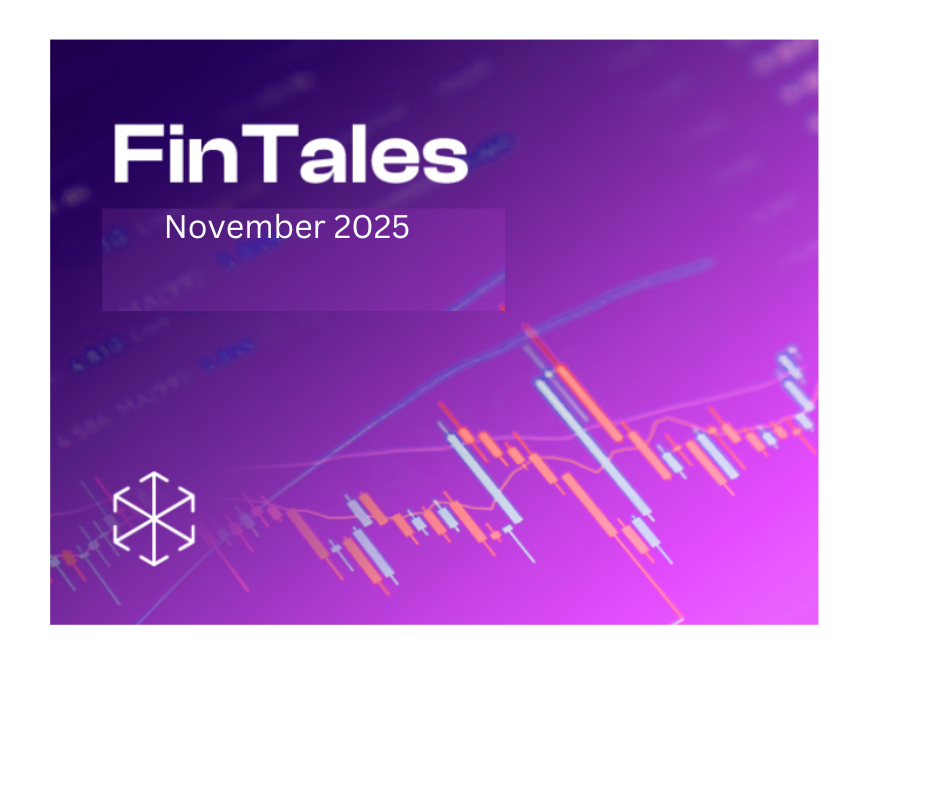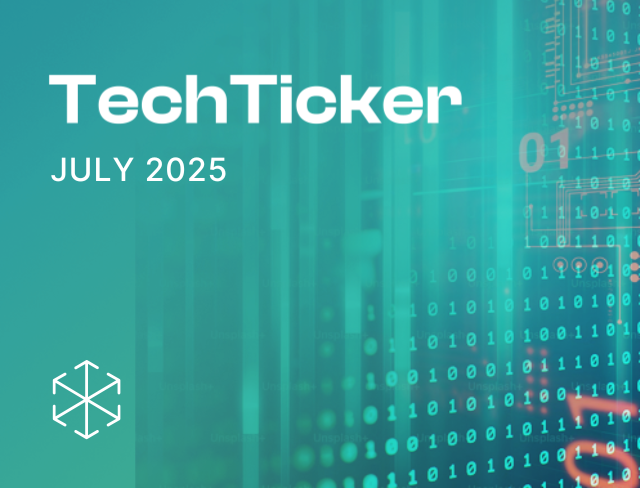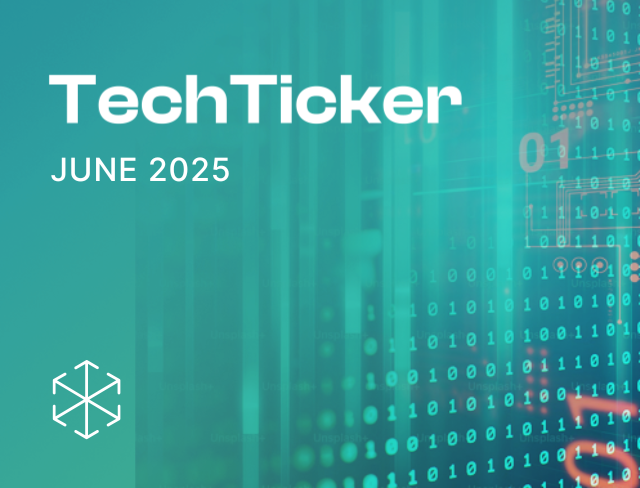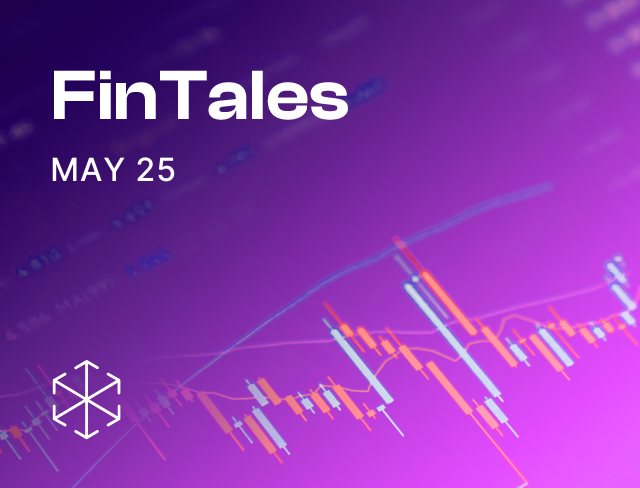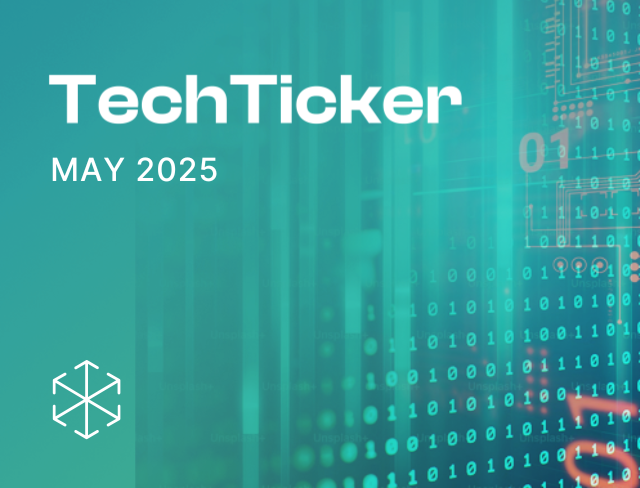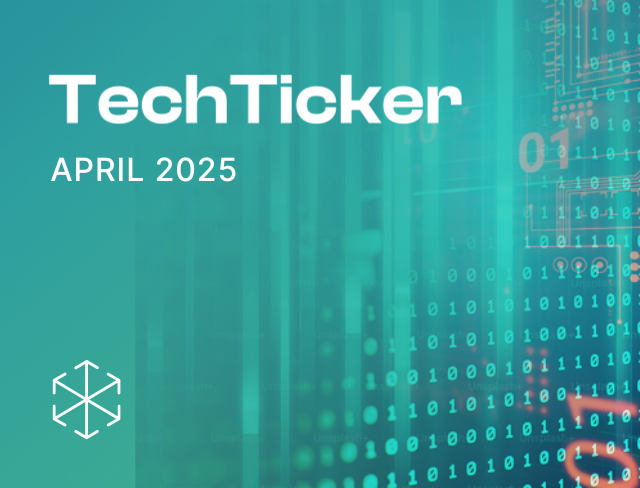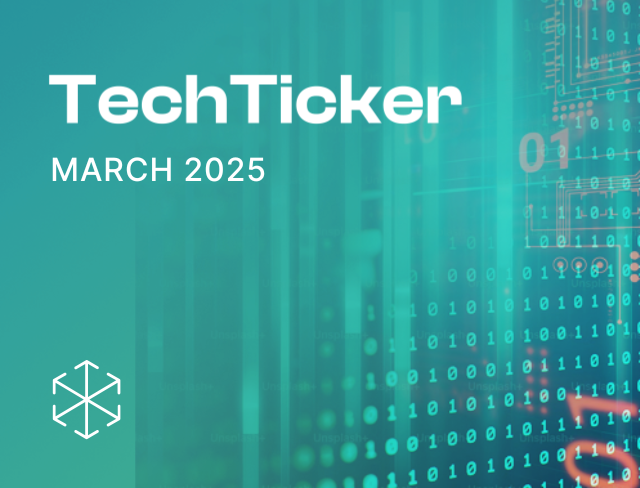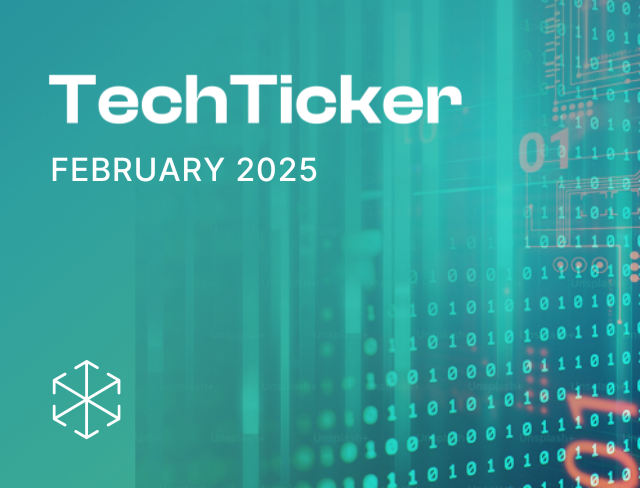February 2022: The Hassleocracy of Crypto-taxes
“Cryptos have no underlying assets, not even a tulip.” –Shaktikanta Das
Ouch. That’s the RBI Governor, not mincing his words.
Like everyone else, we’ve pored over the Budget announcements on crypto-assets. The euphoria in the crypto-verse was short-lived. Crypto-assets haven’t been outlawed; but that’s about it. The proposed tax-rates and structure aren’t – to put it mildly – kind to the crypto-ecosystem. To be fair, regulating this industry is a case of ‘damned if you do’ and ‘damned if you don’t’. So, we travel back in time to document a conversation between Akbar and his trusted minister, Birbal about ‘magic coins’. Perhaps it rings a bell.
[Scene I]
Birbal is furiously scribbling. Other ministers, gathered around, befuddled by the furor. Magic coin traders and minters anxiously await commencement of the proceedings. Some of them have been hauled up by sainiks (security forces). Commoners throng the court, eager for Akbar to arrive. They are speculating if the emperor himself owns a few magic coins. “I’ll bet you 5 magic coins he does”.
*Akbar enters * all rise.
Birbal: Jehanpana, the heavens are falling. They’re all buying some magic coins, and the scene’s appalling.
Akbar: Pray tell, what are these magic coins?
Birbal: Jehanpana, they come in many cases and types. They can’t be seen, and we should curb this hype.
Akbar: Why, then must one buy them? Are they worth more than the tulips in my garden?
Birbal: Some use them to lend; others to pay. Some claim they will be dearer than gold one day.
Akbar: Birbal, the world knows of your wisdom. I leave it unto you to do what is right.
Birbal: Let your people trade away. Trust me, Jehanpana, it will be okay.
*Magic coin traders erupt with joy. They glare at the sainiks, trying to break free. Birbal smiles wryly*
Akbar: Birbal, I want your advice to set things right. Pray tell, do you rejoice at my plight?
Birbal: Fret not, Jehanpana. We will tax magic coin trades at the highest rate. You will soon see our coffers inflate.
* Commoners gasp. Akbar, now relieved, breaks into a wide smile *
Akbar: O wise Birbal, you know the cure to my pain. You have proven your loyalty once again.
[End Scene]
American political commentator, Chris Hayes talks about “hassleocracy” – making something such a hassle that less people do it. The Budget proposal to tax virtual digital assets or VDAs (like cryptos and NFTs) could change the way Indians interact with the VDA ecosystem. It’s hassleocracy, at its best.
All VDA headlines from the Budget have centered around the one big change: 30% flat income tax. Less talked about is the seemingly innocuous 1% withholding tax (popularly, TDS or Tax Deduction at Source). The rule is simple, every time you pay someone (in cryptos or good old fiat money) to buy VDAs, you must withhold a 1% tax on the transaction amount. This withholding tax will be cumbersome and takes away money available in the hands of traders. Centralised exchanges may make it somewhat easier to collect it. But what about P2P trades? Or decentralised exchanges? That makes it a hassle enough for lesser people to make these trades.
And where does this leave the other side of this equation – crypto-exchanges, crypto-advisory platforms and NFT marketplaces?
Let’s look at the crypto-exchanges first. A large chunk of their revenue comes from active traders – people who make multiple trades a day and pay a fee on every trade. But with the Budget changes, there will likely be a dip in transactions and speculative active trading. So, crypto-exchanges, who have relished having short term active traders, may need to recalibrate. Many newer centralised exchanges have raised money on the promise of the millions of new users that will join the crypto-bandwagon. There is a race to provide the simplest, most efficient trading experience to these new users. But the 1% withholding tax distorts the simplicity of crypto-trading, and the promised users may never show up. And while speculative trading may reduce, advisory platforms – home to the low-risk, long term value seeking investors – may benefit.
And amidst others, NFT marketplaces find themselves in a unique bind. The volume of trades of an NFT is an apparent indicator of its value. And increasing volumes add to an NFT marketplace’s commissions. With a potential decrease in volumes, NFT marketplaces are also likely to take a hit. However, in the long run, if only serious NFT connoisseurs remain, the NFT marketplaces will likely win. For instance, a tedious tax process may reduce price manipulation through wash trading (making false trades to drive up value of an NFT), an activity rampant on NFT marketplaces.
That said, the Budget announcements led to a 30-50% increase (from previous day) in user sign-ups on crypto-exchanges on the day of the Budget. How this translates into everyday trading behaviour is yet to be seen. At the end of the day, economic behaviour isn’t rational, it’s simply human, as behavioural economist Richard Thaler would say.
For a more detailed analysis of all the Budget announcements on VDAs, you can read our blog here.
************************************************************************
March 2022: Payments Infrastructure and the Russia-Ukraine Conflict
“I need ammunition, not a ride.”– Ukrainian president, Volodymyr Zelensky
Ammunition, turns out, comes in many shapes and sizes. There’s missiles, tanks, Molotov cocktails and threats from Ukrainian grandmothers. And then there’s payments infrastructure. Governments and corporates across the world are fighting back against Russia’s (or Putin’s) war by cutting off their access to money. Access to payment infrastructure has become the weapon of choice to deter Russia’s invasion of Ukraine.
Visa, Mastercard and other payment companies suspended their services in Russia. And several Russian banks were disconnected from SWIFT – the network underpinning global cross-border payments. SWIFT functions like a secure messaging system for financial transactions. Without it, moving funds in and out of Russia is complex and costly. It can still be done, but it’s a whole lot harder. Russian banks could rely on alternatives, like Russia’s own ‘System for Transfer of Financial Messages’ (SPFS). Or China’s Cross-Border Interbank Payment System (CIPS). Or they could go back to using telephones and fax. At this point, however, the geopolitical west is asking Putin to go ‘fax’ himself… I couldn’t resist.
Coming back.
Access to capital is woven into the fabric of war. And in this war, both Russia and Ukraine are leaning on cryptocurrency as capital. The former to bypass sanctions. And the latter to solicit donations.
It is speculated that Russia may use cryptocurrencies to blunt the impact of economic sanctions. But this is unlikely to work for Russia. Many cryptocurrencies store transactions on publicly accessible blockchains. And the traceability of illicit transactions does not give cover to large-scale sanction evasion. Of course, cryptocurrencies are not (yet) widely accepted. Not nearly enough to serve as a meaningful alternative to global payment networks.
For the Ukrainian government, cryptocurrencies are a new way to finance their resistance. Ukraine’s government has reportedly raised nearly $100 million in crypto donations, which it has used to purchase, among other things, ‘ammunition’.
In one way or another, both countries are leaning on cryptocurrency. Which is why Putin’s invasion of Ukraine could be the ‘world’s first crypto war’.
************************************************************************
March 2022: The Payments Monetization Trilemma
In the film Bandersnatch, viewers make decisions for the main character – the young game programmer Stefan Butler. It is an interactive ‘choose your own adventure’ film. You, the viewer, make choices for Stefan. Your choices determine Stefan’s fate.
Today we want to take you on a similar adventure. A thought experiment, where you are the founder of a digital payments business. Based on your choices, the story can take multiple paths. Your choices determine how the story ends. Which path would you choose?
Door One: Betting on payments
In this storyline, you build a pure-play payments business. You hire the best talent to create a smooth, reliable, and secure payment experience. It’s a crowded space, so you keep raising funds to fuel cashbacks and rewards. You burn through capital. But you believe the costs will be recovered from the fee paid by merchants for availing your digital payment services (also known as Merchant Discount Rate or MDR). Except things don’t go as planned. The government declares that merchants can’t be charged MDR. Nor can you charge customers for paying digitally, regulation doesn’t permit it (and consumers are unlikely to pay a convenience fee – they’d much sooner switch to cash). To compensate, the government announces a Rs.1300 crore scheme. But it isn’t enough to cover the Rs. 5500 crore revenue loss suffered by the payments industry. So, you can’t make money from either side of the network: customers or merchants. You need to pivot. There’s no money in payments. Time to see what’s behind Door Two.
Door Two: Monetising data
In this reality, you built a payments business which serves as a data mine. You gather large amounts of data about your users and merchants. And then use this data to cross-sell other more lucrative products. Like loans, investments, and insurance. Your entire payments business is ‘customer acquisition cost’ for another business – another product. But turns out, your targeted offers are eerily accurate. Your users are spooked by how well you know them. They fear their privacy is compromised. Data privacy is also at the top of the government’s agenda, and it’s all set to introduce a new data protection law. Under the new law, you can’t use data collected for one purpose for another. So, you can’t use data collected for facilitating payments to cross sell a lending product – unless you get clear user consent to do this. Some users consent, but many do not. Another monetization strategy, which could have kept your payments business afloat, is under threat. With nothing to lose, you open Door Three.
Door Three: Becoming a bank
In this narrative arc, you realise that to become profitable you need to be a ‘neo-bank’. Payments, by itself, isn’t going to cut it. Except under current law, you can be as ‘neo’ as you like. But you can’t be a ‘bank’. You can’t accept deposits or give loans. To offer account or loan services, you need to partner with an existing bank. And your app is simply an experience-layer over the bank’s products. But much to your delight, the government’s leading think-tank proposes allowing full stack ‘digital banks’, which can be operated without any physical bank branches. The digital banks can accept deposits and give out loans. They can participate in both sides of the balance sheet (unlike ‘payment banks’ which can accept deposits but can’t lend). But this proposal hasn’t been greenlit by the central bank, yet. And you’ll probably have to wait a while before you can apply.
Seems like an intractable trilemma. To understand how this plays out in the real-world, we spoke to Prince Jain, who works with the product team at Jupiter. He also writes one of our favourite fintech blogs, Unit Economics. He explained that it’s difficult to monetize a standalone payments business. While some monetization is possible in the B2B space, it’s almost impossible in the B2C context. “If you build a niche B2C payments business, you can become an acquisition target in 3-4 years. But a B2C payments business by itself may not be sustainable for 15-20 years, unless you achieve massive scale.” he elaborated. When asked about the impact of regulation on MDR, he thinks that even without government intervention, market forces will push MDR down, but it’s unlikely to become zero. A zero-pricing strategy is unsustainable for all payment service providers. While discussing data usage, he emphasised that currently fintech players rely on alternative data only to a limited extent: “The perception of how much data we use to underwrite and cross-sell is bigger than actual use. The risk policies still strongly rely on external data like credit bureau information or bank statements. External data is still the most used type of data. But this may change as B2C fintechs scale and build larger alternative data sets”.
All in all, building a digital payment business in India is challenging. And at least some of these problems can be addressed if the government rolls back the zero MDR policy and allows payment companies to monetize their core business. Otherwise, some fintech entrepreneurs may meet Stefan’s fate in Bandersnatch where there are many possible endings but none are happy.
************************************************************************
May 2022: RBI Restricts Access to Card Transaction Data
In April 2022, RBI notified the directions on Credit and Debit Cards. In these directions, it asked co-branding partners to keep their hands off card transaction data. The RBI has, this time, gone straight for the fintech jugular – access to data.
A patchwork of regulations govern the fintech space. For example, no single direction governs digital payments or lending. Instead, multiple regulations – issued at different points in time – govern these products. Some regulations read in harmony, others don’t. And the recent card directions (which bar co-branding partners from accessing the transaction data) is an example of the latter. Here’s why.
Outsourcing directions
These are umbrella directions that govern regulated entities (like banks, NBFCs, non-bank PPI issuers, etc.). Each time these entities outsource any of their functions, they must abide by these directions. For example, a bank that outsources its customer support functions. Or, a more recent market practice, where a regulated entity partners with a tech company to build an app, acquire customers or market its products. Like MakeMyTrip ICICI Bank Credit Cards. Each of these service providers perform a function for the regulated entity – which the regulated entity doesn’t want to (or can’t do) on its own. The regulated entity can’t however outsource its core functions – like making the decision on whether a borrower is creditworthy. RBI doesn’t want an entity which it doesn’t regulate taking these critical calls.
New card directions which bar access to card transaction data
These rules apply to a sub-set of outsourced service providers – a card issuer’s co-branding partner. Like MakeMyTrip (in the earlier example) – which co-brands the credit card that ICICI Bank issues.
A co-branding partner needs access to customer data to perform its functions. Both, the outsourcing directions and new card directions regulate this access. The new card directions prohibit a co-branding partner from accessing customer transaction data. But the outsourcing directions don’t. They allow the co-branding partner to access this data on a ‘need-to-know’ basis. This is where the card directions and outsourcing directions are not harmonized.
The new card directions are also not attuned to market reality. The outsourced service providers are becoming more interwoven in the fabric of the payments value chain. Let’s take the example of technology service providers like M2M, Zeta and Setu. They design the tech-stack for the card issuers. And assist in transaction processing. These tech players need access to card transaction data to provide services. In most cases, their logo appears on the cards. So, they also act as co-branding partners. Now whether these players can access card transaction data is open to differing interpretations.
But an even bigger concern is the RBI’s intent to put an embargo on outsourced service providers from accessing transaction data. It’s likely triggered by events like misuse of data and identity theft on the Dhani App. RBI wants to prevent misuse of card transaction data. But blanket prohibition of this kind will inhibit fintech innovations. As RBI has itself stated on multiple occasions, fintechs are responsible for many data-fueled innovations. Transaction data gives important insights to fintechs on strengths and pitfalls of the tech-infrastructure. It aids in detection of frauds, and better creditworthiness assessment. Regulated entities often rely on their service provider for these tech-enabled functions.
RBI must consolidate and modernise the regulatory patchwork which governs tech-outsourcing arrangements. It has already proposed to issue new Master Directions on IT Outsourcing. The new master directions can prescribe activity-based regulations for different outsourced functions like software-based services and customer-facing services. The directions can be graded according to the criticality of the function outsourced. A fintech which designs and manages chatbots for customer services can be subject to light-touch regulations. On the other hand, a fintech, which designs and manages software for payment processing can be subject to stricter regulatory standards. For example, RBI can ask fintechs like Zeta, M2M and Setu to adopt higher data security and confidentiality measures. This will prevent data misuse, without hampering innovation.
************************************************************************
June 2022: Credit Card Payments on UPI: Wherefores and Whys
RBI has proposed linking credit cards (CC) to UPI. It’ll, to start with, allow Rupay credit card payments through UPI rails. And in the due course, allow other CC issuers to come on board. Credit on UPI has been on the fintech industry’s wish-list for a long time. But it must welcome this dessert-worthy news with a pinch of salt. Here’s why.
First, UPI may not make CC payments more convenient for small-value transactions. CC payments (on card network rails) below Rs. 5000 don’t need any additional factor authentication (like OTP). So, to pay a merchant, I simply need to tap my NFC enabled CC on a card machine. If I use UPI for CC payments, I may have to enter my UPI PIN (to enable payments). Which I’d rather not. Also, UPI is typically used for small-value payments. Only 6.33 % of users (who want to make person to merchant or P2M payments) use UPI for transactions over Rs. 2000. So, in all likelihood, the majority of UPI users (like me) may prefer tap-and-go CC payments (over CC payments through UPI).
Second, Merchant Discount Rate (MDR) on CC payments may impact merchant acceptance (of CC payments through UPI) negatively. Zero MDR is the key enabler of UPI’s ubiquity. Merchants accept UPI payments without any additional costs. But MDR for CC payments ranges between 0.4 % to 3 % (of transaction value). It’s unlikely that the Government will extend its zero MDR policy to CC payments on UPI. Because this’ll make businesses of CC networks, issuers and intermediaries (like payment aggregators) unviable. It’s also unlikely that merchants will loosen their purse strings to cover this cost (for CC payments on UPI). That’s what, at least, appears to be the industry sentiment.
Third, CC payments through UPI may not command the same trust as CC payments through card rails. One of the reasons for the popularity of CCs is effective redressal of user concerns. As a Visa or MasterCard CC user, I can dispute charges on my CC. The card issuer refunds my money if the CC transaction is fraudulent, and I’m not at fault. But, the dispute resolution mechanism for UPI and Rupay CC transactions is not as efficient. NPCI has in fact asked participants in the UPI ecosystem to implement online dispute resolution from 30 September 2022. But it remains to be seen if this’ll match-up to the efficient dispute redressal mechanism for CCs, which has been tried, tested and trusted over the years.
So, I, along with the rest of the industry, wait for the RBI and NPCI to iron out the kinks before I consider my wish granted.
************************************************************************
August 2022: A Letter to UPI
“This is an outstanding accomplishment. It indicates the collective resolve of the people of India to embrace new technologies and make the economy cleaner.” – PM Modi
That’s PM Modi lauding UPI crossing 6 billion transactions in July. Like any icon, UPI has gained its share of admiration and envy. Last month, we intercepted a letter from a Rs. 100 currency note to UPI. It gets ugly. Reader discretion is advised.
Dear UPI,
I know everyone loves you. But I loathe you.
In my glory days, I used to be the only way to pay. People came from far and wide to ‘withdraw’ me from the bank. Safely tucked away in their wallets, I’d go everywhere with them. When we parted, I’d find home in a new wallet. Now ‘wallets’ are on the phone. They’re called e-wallets, I hear. Sheesh. And you, insufferable UPI, have found a way to pay through these e-wallets too.
I have, admittedly, been found in a few compromising positions – stuffed in a few pillowcases and under a few mattresses. But I’ve also found myself in pockets of migrant workers. 46 crore bank accounts were opened under the Jan Dhan Yojana. 18% of these accounts remain inactive. Which means that I’m still the lifeline for many Indians.
I’m also, admittedly, not cheap. The RBI and banks spend Rs.21,000 crores annually on currency operations. A Rs.100 note like me costs Rs.15-17 over a 4-year lifecycle in printing, distribution and storage. But let’s not pretend you’re ‘free’. Consumers and merchants don’t pay for you, UPI, only because payment service providers foot the bill. And it’s a hefty bill – Rs. 5500 crores annually. Even the Rs.1300 crore government subsidy comes from the taxpayers’ kitty.
Oh, and need I remind you of the war against my people – demonetization? Where my brethren, the beloved 500, was mercilessly hunted. I saw you sweep in and make hay while my tribe was under attack. Many wrote my obituary then as the cash to GDP ratio dropped from 12% to 8%. But I survived. And now I’m stronger than ever, with the cash to GDP ratio at 14.5%. My tribe is resilient. We found our way back into the hearts, pockets, and mattresses of our countrymen.
So, UPI – you insufferable teacher’s pet – don’t forget that while you may be the golden prince, I’m still the king.
Luke-warm (mostly cold) regards,
Mr. 100
************************************************************************
August 2022: IRDAI Creates Opportunity for Telematics Insurance
While taking an insurance policy in 1933, Dunn knew that her husband (who was going to use her car) was a dangerous driver. Yet, she hid this fact from her insurance company. A few years later, her husband crashed the car. The company dishonored the claim because Dunn hid an important fact – the driver’s behavior.
But is the driver’s behavior relevant? In India, it’s not. Car insurance premiums are usually based on the car’s features like engine capacity etc. But things are about to change. IRDAI has permitted general insurance companies to introduce three tech-enabled concepts for motor vehicles’ Own Damage cover. The most interesting one is ‘Pay How You Drive’ (PHYD) cover. Here, the driver’s behavior is considered while deciding the premium. For e.g., Mr. Ace Driver is charged less premium because he drives within speed limits. Whereas Mr. Risky Business is charged more because he often drives rashly, with quick accelerations and abrupt brakes.
But IRDAI’s move is preceded by two developments. One in the realm of law. The other in technology.
Development in Law: Earlier, IRDAI fixed insurance premiums (tariffs) that could be charged in India. But in 2007, it de-tariffed Own Damage cover. This allowed insurers to freely determine insurance premiums (except for Third-Party Damage covers). This flexibility is essential for insurers to deliver products like PHYD. If IRDAI had continued to fix tariffs, Mr. Ace Driver and Mr. Risky Business would’ve paid the same insurance premium. But because of this flexibility, Mr. Ace Driver pays a lot less.
Development in Technology: Cars have undergone a huge transformation – from purely mechanical to fully electric. As cars incorporated electrical components, it became easier to capture car movements. This is done using telematics devices. These devices are fitted into the vehicle. And they record speed patterns, acceleration and braking patterns, duration and location of the journey etc. This information is then relayed to the insurer and analyzed to determine driving behavior.
Products like PHYD policies are usually referred to as ‘Telematics Insurance’. These policies are heavily dependent on data. And various iterations of these products can be created – by using different data points to assess risk. For PHYD, these data points are speed, acceleration and braking patterns etc. Another product – ‘Pay As You Drive’ cover uses the total distance traveled (per month) to assess risk. The rationale is that if you drive less, your risk is lesser. Thus, data is a critical input for Telematics Insurance. And so, privacy risks must be balanced with benefits of such products.
A risk-based approach is needed while applying data privacy principles to telematics data. Because all telematics data may constitute ‘personal data’. But not all data points pose a similar risk of harm. For e.g., the driver’s braking pattern might pose lesser risk of harm than the car’s location data which may reveal visits to abortion clinics, political meetings, religious venues etc. And so, braking pattern data may not be regulated as onerously as location data. Insurers should also weigh the privacy risks of their data collection activities. And avoid collecting data points which pose a significant privacy risk, but don’t add real value in assessing the insurance risk. For e.g., a car’s location data may not necessarily add value in assessing the insurance risk.
Conclusion: Today, Mr. Ace Driver is paying a higher premium and subsidizing the insurance costs of Mr. Risky Business. But Telematic Insurance has enabled the gamification of insurance. Drivers are incentivized (through lower premiums) to drive safely and disincentivized (through higher premiums) to drive rashly. But this is limited to Own Damage covers. The IRDAI still notifies the tariffs for Third Party Damage covers. So, for gamification of insurance to have a real impact, Telematics Insurance pricing should be permitted for Third-Party Damage covers as well.
While IRDAI has its reasons to prescribe tariffs, IRDAI could consider prescribing tariff brackets based on risk scores. Here, the insurer could calculate the risk score using telematics data. And then decide the insurance premium based on IRDAI’s tariff brackets. Because like Lord Hanworth said (while deciding Dunn’s case) “… there is a greater risk in insuring a person who is likely to have an accident because of the way he drives a car”.
************************************************************************
September 2022: RBI Digital Lending Guidelines
“In a diverse market like India, key is to match right-priced borrower risk to investor/lender risk” -Fintech Founder (State of India Fintech Union 2022)
Matchmaking.
That’s what Indian fintech does best. Matching the right borrower with the right lender.
RBI’s new digital lending guidelines aim to rid fintech matchmaking from meddlesome interlopers. Or, at the very least, diminish their role. The RBI wants borrowers and lenders to interact with each other directly.
But are fintech platforms meddlesome interlopers? What if we got rid of them? What if borrowers and lenders were left to find each other? I wonder, dear reader, would an advertisement in this dystopia look like this:
Borrower wanted: Reputed cash rich NBFC seeks attractive, young, thin or thick (file) borrower. Credit score no bar. Open to new-to-credit. Cultured phone book contacts required. Share social media profiles, phonebook contacts, SMS history and photo gallery to check if stars align.
Lender wanted: Credit-worthy borrower seeks eligible lender. Must hold valid RBI license, provide interest free credit till salary arrives and offer cashback. Banks preferred but open to NBFCs. To apply, send targeted ads to mobile number, email ID and social media profiles.
Shudder. Maybe we do need those slick fintech apps and algorithms after all.
The RBI issued the digital lending guidelines (Guidelines) in September 2022. The recurring theme in the Guidelines – reducing the influence of unregulated fintech players in the lender-borrower relationship.
The Guidelines prohibit pass-through accounts, impose stricter data protection norms, and mandate reporting of all loans to credit bureaus. The Guidelines also provide these key clarifications. First, all loans disbursed on or after 2 September 2022 must comply with the Guidelines from that date itself. Loans disbursed before 2 September 2022 must become compliant by 30 November 2022. Second, loans for a specific end-use can be disbursed in the end-beneficiary’s account. This allows disbursal of the loan amount to merchants for buy-now-pay-later (BNPL) products if there’s a specific end-use. Third, synthetic securitization, which involves transfer of credit risk for a loan residing on the lender’s balance sheet through derivatives or guarantees, is prohibited. This has created doubts about the permissibility of first-loan-default-guarantee (FLDG) arrangements.
The Guidelines mark the beginning of a new world order in the digital lending industry. The birth of Christ divided the Gregorian calendar into Before Christ (BC) and anno Domini (AD). The Guidelines too divide the eras of digital lending in India into Before Guidelines (BG) and After Guidelines (AG). To understand how the experience of customers and fintechs will change as we move from BG to AG, here’s a walk through.
The customer’s perspective
Before Guidelines: You see a pay-later option on the check-out page of a grocery delivery app. You download the pay-later app on your device and verify your mobile number via OTP. You notice that by submitting the OTP, you’re agreeing to the app’s terms. But like 77% fintech users, you don’t read the terms and just click next. You fill in basic details like name, age, gender and email ID. The app asks for several phone permissions – contact list, location, SMS, media etc. It doesn’t explain why it needs these many permissions. But since it’s a take-it-or-leave-it, you concede. And voila! You receive instant credit of Rs.2000. It’s not much but it’s enough to buy what you need. Unfortunately, you forget to repay the bill. And one day you receive a call from a rude recovery agent demanding immediate repayment of your loan taken from an NBFC. You don’t remember taking any loan. And you’ve never even heard the NBFC’s name. What you remember is ordering groceries by using a ‘pay-later’ service. You immediately repay the bill and pray that this oversight hasn’t damaged your credit score. You swear to stay away from the ‘pay-later’ button.
After Guidelines: You see a pay-later option on the check-out page of a grocery delivery app. You download the pay-later app on your device and verify your mobile number via OTP. You tick a box to agree to the app’s terms, you still don’t read them. You fill in basic details like name, age, gender, and email ID. But this time, the app also seeks your income and occupation details. The app also seeks permission to check your credit score. You consent by ticking another box. The app then seeks several phone permissions – contact list, location, SMS, media etc. And each permission mentions a purpose – KYC, credit-risk assessment, tailored offers etc. Some permissions are essential, others aren’t. You decide to only grant essential permissions and opt-out of the rest. Next, you see a Key Fact Statement pop-up. It says you’re taking a loan from an NBFC. It also lists penal charges in case of default and details of grievance officers and recovery agents. Yikes, this sounds serious. After some thought, you decide to go ahead anyway. But you set multiple reminders to repay the amount because you understand a default could damage your credit score.
The fintech’s perspective
Now let’s see what the story looks like from the fintech’s perspective. How does your experience change as we move from BG to AG era? Imagine you’re a start-up hoping to capitalize on India’s massive credit gap. You’ve built a slick app which allows customers to avail an instant credit line from your partner NBFCs. You’ve also tied up with a payment aggregator (PA) to gain access to its merchant network. The alternative is acquiring merchants on your own – which is too expensive. Through the PA’s infrastructure, your customers can use the credit line from the NBFC to pay any of the PA’s merchants.
Before Guidelines: After approving the loan, your partner NBFC transfers the loan amount to the PA’s account. When the customer makes a purchase using your BNPL facility, the PA transfers the funds to the merchant. When the customer repays her dues, the funds are similarly transferred to the partner NBFC via the PA. So, what’s your role in this fund flow? Well, you’re the conductor of this orchestra. It’s your job to harmonize the activities of multiple lenders, merchants, and customers. For instance, each time a payment is made to a merchant or a repayment is made by a customer, you update the balance on the app. You also decide settlement timelines to merchants to account for returns and refunds. In this manner, you reduce the operational burden of your partner NBFCs and merchants. And make it easier for customers to track all payments and dues in one place.
After Guidelines: After approving the loan, your partner NBFC must transfer the loan amount directly to the customer. And while repaying the loan, the customer must transfer the funds directly to the partner NBFC. The law now prohibits using pass-through accounts of any third-party. It’s unclear whether this prohibition extends to the regulated escrow account of a PA and in which cases the loan amount can be credited directly to the merchant (instead of the customer). For their part, PAs have requested the RBI for permission to act as intermediaries in digital lending transactions. You hope the RBI green-lights this model soon. Because your partner NBFCs and customers can’t deal with each other directly.
Your growth has also slowed down. More customers are dropping-off due to the longer onboarding process and the need for explicit and specific consent. Considering the RBI’s confusing stance on FLDG, your partner NBFC is reluctant to continue its FLDG arrangement with you. Which also makes it reluctant to extend loans to your new-to-credit and thin-file customers. Your job is to underwrite these customers using alternative data and AI. You’re the matchmaker who’s supposed to determine if the borrower and lender are compatible. If you don’t do this job well, the lender will suffer losses. So, the lender wants you to have skin-in-the-game. If customers you’ve recommended fail to repay their loans, the lender wants you to cover part of the losses. As this disincentivizes you from recommending customers who aren’t credit-worthy. If you can’t provide FLDG, the lender can’t trust your underwriting skills and it becomes risk-averse. This also reduces the pool of credit available to underserved customers. You hope the RBI clarifies the conundrum around FLDG soon so you can finally figure out how to adapt to this new world order.
************************************************************************
October 2022: The Diary of a Fintech Entrepreneur
A Tale of Two Cities begins with the now immortal lines: it was the best of times, it was the worst of times. If Charles Dickens wrote about the Indian fintech ecosystem today, we think it would be eerily similar, something like:
“It was the best of times, it was the worst of times,
it was the age of unicorns, it was the age of funding freeze,
it was the epoch of BNPL, it was the epoch of no FLDG,
it was the season of UPI, it was the season of zero MDR,
it was the spring of CBDCs, it was the winter of cryptocurrencies,
we had everything before us, we had nothing before us…”
2022 has been a tumultuous year for Indian fintech. We recently got our hands on a fintech entrepreneur’s diary describing its highs and lows. Here’s a glimpse at how she’s been navigating business opportunities and regulatory curveballs with her trusted advisor, Cecil, by her side.
Dear Diary,
We’re now among the top five most downloaded fintech apps in India. Our marketing campaign was a hit, and it seems cashbacks and influencer promotions did the trick. Nonetheless, it wasn’t smooth sailing. The tech team struggled to keep up with the surge in users and the app crashed. Luckily, we were able to get it up and running within the hour.
Dear Diary,
The pitch-deck is finally done. I was chasing my tail on the monetisation model. After several hours of brainstorming with Cecil, I added a few more slides on using payments data to cross-sell credit products – our core monetisation strategy. Fingers crossed.
Dear Diary,
We’ve been funded! Cecil and I jumped unabashedly on our couch, I must admit. I posted on LinkedIn about the fund-raise after running the post by Cecil. He thought it had the right mix of humility and aplomb for a newly funded fintech start-up – ‘humble brag’ as the kids call it.
Dear Diary,
The investors asked us to tighten our KYC process. They’ve been spooked by the Dhani identity thefts. I’m wary of adding friction to the customer journey. But as Cecil reminded me, it’s a tradeoff between user convenience and security; and the latter, in fintech, always wins. I also watched the Netflix series on the Wirecard scandal. Scary stuff.
Dear Diary,
We received an offer to partner with a crypto exchange. Cecil and I are still bullish on crypto. Like Elon, Cecil’s favorite crypto is Doge. But our partner bank and payment aggregator vetoed the proposal. Sigh.
Dear Diary,
I’m tired. I woke up with a terrible hangover after Cecil’s birthday party. And if that wasn’t enough, our partner bank called to discuss our co-branded card. They’re reluctant to share transaction data with us anymore because the guidelines bar it. Our lawyers, bless them, found a loophole.
Dear Diary,
RBI banned credit-loading PPIs. Cecil and I had gone for a run. When we returned, I saw half a dozen missed calls from our legal team. That’s never a good sign. We were going to launch a credit-loaded PPI. Not anymore.
Dear Diary,
The digital lending guidelines dropped. Much has changed. It’s another reminder that the RBI holds the kill switch. I want to minimize disruption to our existing customers that we’ve paid dearly to acquire. Cecil’s been a rock – a voice of reason and calm. This too shall pass.
Dear Diary,
I’m in Bombay for this glitzy fintech event. The who’s-who of the fintech verse are here. There’s a lot of fist-bumping and chest-thumping on stage. But behind the scenes, the mood is sombre. I find these events tedious. I’d much rather spend my day tinkering with our app, discussing new ideas with Cecil, or talking to users. Alas.
Dear Diary,
It’s the last day to purge card data. We thought RBI would relent. It didn’t. Our payment aggregator said they’re prepared for tokenization. Cecil tells me to trust them. And that’s what I’ll do because that’s all I can do.
Dear Diary,
I woke up today without Cecil slobbering all over me – never a good sign. So I took him to the vet, which he hated, plus it took all day. My start-up can wait, Cecil is my priority.
Wishing Cecil a speedy recovery.
************************************************************************
November 2022: FTX’s House of Cards
If you doubted FTX some months back, many tweeps would accuse you of spreading FUD (fear, uncertainty, and doubt). After all, it was the third largest crypto exchange (by volume) and was valued north of $30 billion. Its founder, now infamous SBF, was then rescuing troubled crypto firms, drawing comparisons with the banking bigwig, JP Morgan. SBF was also among the most powerful people in crypto. So, what went wrong?
A lot. There are many explanations out there. But this is the simplest version of events (based on public sources).
SBF sets up Alameda Research. It’s a trading firm that makes risky trades in crypto. Now, SBF says “right, why do we need to trade on other exchanges? Let’s create one for ourselves.” And then FTX, the crypto exchange, is born. FTX and Alameda are distinct entities. But not really.
With the exchange, FTX launches its own token – FTT. Per se, FTT has no value. So, FTX props up the prices of FTT. For holding its token, it gives you preferential treatment on the exchange. More people want preferential treatment. So, they start buying FTT. When FTX has revenue lying around, it repurchases FTT. Effectively, the price (and fortune) of FTT goes up with the fortune of FTX. They’re not intertwined, they’re inseparable. Oh, and meanwhile, Alameda picks up a lot of FTT at very low prices.
FTX makes money when you buy and sell crypto. But it realises it can make even more money. So, it starts offering loans. You can now borrow money (or stablecoins) from it to buy crypto. Or the opposite. FTX knows this is risky business. So, it asks you for more collateral than the sum you borrow. For example, you must deposit Bitcoin worth INR 10,000 to borrow INR 5,000. This is prudent risk management. Except for that collateral in a volatile asset is also… volatile.
Now, remember, Alameda makes money through risky trades. Reports suggest it didn’t. Instead, it lost money on these trades. So when Alameda seeks funds to cover these losses, FTX obliges and lends Alameda its customers’ assets, keeping FTT as collateral.
The death spiral begins when worrying details about FTX and Alameda emerge. And a competitor announces plans to sell its FTT holdings. With tied fates, the fortunes of FTX would affect FTT. And the fortunes of FTT, FTX. That’s what happens when enough FTX users begin asking for their money back. FTT falls. So does FTX. It doesn’t have enough assets to pay back its customers.
With me so far? Great. Now, what does this mean for crypto?
Undoubtedly, FTX’s fall is catastrophic for the crypto ecosystem; which is already suffering from a long winter, regulatory suspicion, and loss of investor confidence. Like crypto collapses before this, this one is also being dubbed crypto’s Lehman Brothers moment. (Melancholically) ironic, since the Lehman Brothers implosion itself gave birth to crypto.
Broadly, FTX’s collapse could be an inflection point for the industry in three ways:
First, it’s now clear that regulation is necessary, and perhaps, imminent in many jurisdictions. Unchecked players could pose serious risks to the wider financial system and of course to investors. Sensible voices in the industry haven’t been shy of fair regulation. But regulators have (mostly) been slow and confused about regulating crypto. This uncertainty has been exploited and it’s time regulators start serious discussions on what regulation should look like.
Second, FTX’s fall will have a cascading effect in the crypto ecosystem. Crypto brokerage Genesis has already suspended withdrawals after higher-than-usual withdrawal requests. So has Blockfi. Several crypto firms have exposure to FTX and might face the heat as this unfolds. But this may be a good time for a clean-up act. To comfort investors, several crypto exchanges have volunteered to share their proof of reserves (proof that they won’t do an FTX). A similar exercise is underway closer home. Binance chief CZ believes this is like the dot com bubble. “Some cryptos may drop in price, some projects may fail, but the technology will stay” he adds. In the long run, that could be good for the industry.
Third, many will go back to what Satoshi envisioned – a trustless and transparent future, without intermediaries. The migration is already underway. Decentralisation is a core tenet of crypto. Without it, not much separates crypto from traditional finance. Sure, decentralised finance has its challenges – user experience isn’t as seamless, users must safeguard their own funds, and centralisation may still creep in. But FTX, a centralised exchange, serves as a stark reminder of why crypto’s original vision is valuable – it can keep us from putting too much trust in the hands of a few, large centralised intermediaries (who might go rogue).
************************************************************************
December 2022: Does India Need a CBDC?
The United States wants to ‘get it right than to be first’. That’s what Jerome Powell, US Federal Reserve’s chairman said about the digital Dollar two years ago. The United States still doesn’t have a central bank-backed digital currency (CBDC). Meanwhile in India, RBI just piloted the digital Rupee (e₹) for retail users (like you and me). And the finance minister has promised a full-scale launch by the end of this financial year (22-23).
If you’re an e₹ novice, you can read this excellent explainer, or see an e₹ demo here. But if you don’t want to take the detour, here’s what you need to know: the e₹ is the digital avatar of India’s fiat currency – the Rupee. You can access it through mobile phones and pay using QR codes.
Now, India’s digital payment technology is already extraordinary. So much so that, checkout pages today offer a buffet of sophisticated digital payment options – UPI, e-wallets, a bevy of co-branded cards (debit and credit) and lots more. So, does India really need one more way to pay? Do we even need an e₹?
Before we answer that, let’s listen to a conversation between Dasher (one of Santa’s reindeer) and the ever-cantankerous Ebenezer Scrooge (you know, from the Christmas Carol).
[It’s Christmas eve, the whole town is bright with festivities, but there’s one dark and dreary home. It’s here that Dasher knocks at the door with his hooves. Scrooge appears and grimaces at the sight of a beaming Dasher.]
Dasher – Merry Christmas, Mr. Scrooge, I come bearing presents. Here’s an e₹ just for you.
Scrooge – What’s that? Some sort of cryptocurrency?
Dasher – Come now, there’s no need for profanity. It’s a new way to pay online.
Scrooge – Ah, I don’t want the hassle, I like good-old UPI.
[Slightly dejected, Dasher keeps his toothy grin and carries on.]
Dasher – That’s great. Because it works like UPI. You scan QR codes and pay. Except… UPI is a way to pay, but e₹ is currency itself. With e₹, you can pay without a bank or pesky intermediary in between.
Scrooge – So? Get off my lawn, Dasher, before I turn the sprinklers on.
Dasher – Mr. Scrooge, just a moment – the money in your bank account isn’t all that safe. If there’s a run on the bank, you’ll lose your money. UPI can’t help you if the bank itself fails. The e₹ is like cash in your safe. Once you have it, it’s yours, you aren’t entrusting it with a bank anymore. The RBI will pay it on demand. Now, do you still want to keep your money in a bank, just to pay through UPI?
Scrooge – Okay boy, enough of you. Get on your sleigh and begone.
Dasher – Mr. Scrooge, wait. You can pay with e₹ almost anonymously. Unlike UPI, it won’t show up in your bank passbook.
[Scrooge, now interested, feigns disinterest.]
Dasher – And the e₹ is free. Just like UPI.
Scrooge – Well… I do like free things.
[Dasher draws closer, wide-eyed and earnest]
Dasher – Although, Mr. Scrooge, I must disclose the fine print – unlike your bank savings, you won’t earn interest on your e₹ holdings. I believe they didn’t want to shake up bank deposits too much.
Scrooge –That’s it, I’m turning on the sprinklers– off my lawn, Dasher. Bah! Humbug.
Don’t let Scrooge mislead you. The e₹ has some advantages over UPI and cash. But the problem is they all benefit the RBI, not us. For example, e₹ payments are instant and final – just like handing over cash. While UPI payments are also instantaneous for the user, there is a complex web of settlements between banks at the back-end. So, in some ways, the e₹ is more efficient than UPI. It also has an edge over cash – it reduces cash printing and distribution costs. But for an average person, it’s pretty much the same. Or in some cases, worse. It doesn’t offer you interest on your funds (like banks), or complete anonymity (like cash). It promises to deliver more in the future – it could be programmed for specific use-cases (like subsidies). But, in its current avatar, it’s unclear how it will benefit e₹ users.
This is why CBDCs like the e₹ have many sceptics. Take for example, e-Naira, Nigeria’s CBDC. e-Naira was the country’s attempt to capitalise on the crypto boom. But, as it turns out, it failed. Less than 1% Nigerians adopted it after a year of its launch. The Nigerian government is now doing what it can to promote (or force) adoption of e-Naira. It’s subsidising rickshaw rides – if paid for using the e-Naira. It’s even limiting cash withdrawals. The benefits of CBDC – like being legal tender or offering no or low cost payments – aren’t enough for them to succeed. They need something more. Something which helped UPI succeed – cashbacks. China, for instance, resorted to cashbacks with its e-Yuan. But who would fund these cashbacks in India? Many private players have already burnt billions in cashbacks to promote their UPI apps. The government, then? This would be like a subsidy to better deliver subsidies (through the e₹).
Clearly, getting India to adopt the e₹ is tricky. This brings us back to the original question – does India need the e₹? Andy Mukherjee answers this in his Washington Post article. He says that if a high-quality, interoperable payment solution is available at a reasonable price to everyone (this is the definition of UPI), then maybe it’s not worth jumping on the CBDC bandwagon. Poland and Denmark have dropped out of the CBDC race for this reason – they don’t see what incremental value a digital currency offers over existing sophisticated digital payment solutions. So, should India, like the United States wait to get the digital ₹ right?
If you enjoyed reading this round-up, subscribe to FinTales on LinkedIn or receive it in your inbox.

